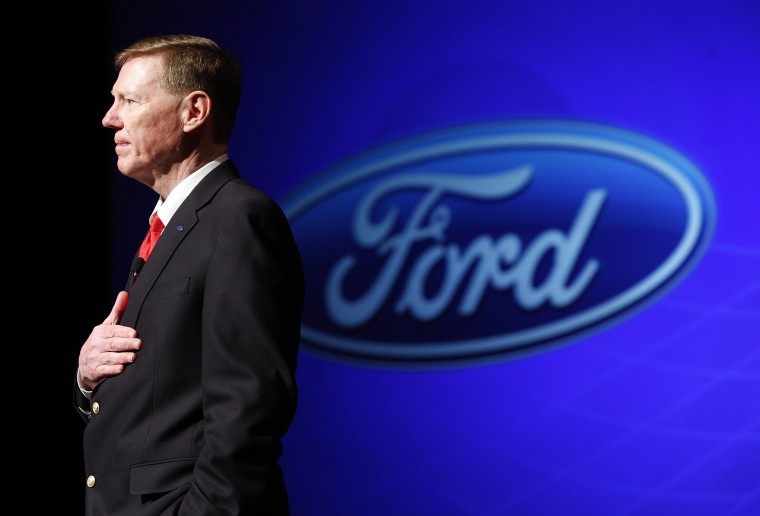What a terrible time to be BP. With oil continuing to gush out of one of its oil rigs into the Gulf of Mexico, the London-based company's future looks as murky as the water around the Louisiana coastline. BP faces losses estimated at $5.1 billion due to the oil spill, according to ING analyst reports. Its brand image, for now, and perhaps forever, is tarnished.
Will BP rebound from this disaster? It seemed the company had put an earlier explosion behind it. The Department of Justice fined the company $50 million in 2007 for safety violations at a Houston refinery that exploded in 2005, killing 15 people and injuring 170.
For big companies, bounding back from corporate scandal, financial malfeasance or public disaster is difficult — but it isn't impossible. Looking at companies that have come back after business downturns, product problems or corporate scandal, several experts on corporate reputation and crisis management helped Forbes identify 10 companies that have made, or are making, turnarounds after corporate hard times.
Strong leadership is key to all successful corporate comebacks. Gordon Bethune, a former Boeing executive, led Continental Airlines from 1994 to 2004, nursing the company back to health after it filed for Chapter 11 bankruptcy protection on two separate occasions. At the time the company, which announced in early May a merger with United Airlines, had been ravaged by regulatory and management problems. Bethune famously created the "Go Forward Plan," rebuilding employee morale, reconstructing consumer trust and returning the company to profitability only two years after bankruptcy filings.
Another strong leader, Steve Jobs, chief executive officer and cofounder of Apple, was ousted from the company in 1985 after losing trust of the company's board members. Innovation at Apple lagged in the years that followed. Sales dropped 18 percent, on average, for three years from 1995 to 1998. Job's return to the Cupertino, Calif., company in 1997 helped right Apple, which went on to revolutionize the digital music and mobile phone industries.
Sometimes replacing family leadership with an outsider helps a troubled outfit. Ford Motor CEO Alan Mulally, brought on board in 2006, is overseeing a turnaround for that carmaker. Mulally cut Ford's workforce by one-third and pared back company brands, creating a smaller team with a tighter focus. His approach seems to be working: Ford's revenue increased 13 percent to $28.1 billion in the first quarter of 2010, compared to the same period the previous year. Profit, up for the fourth consecutive quarter, reached $2.1 billion.
One mistake some top executives make is a reluctance to confront bad news. The moment employees feel they can't voice realities, leadership has failed, says Martin Puris, ad veteran and chief executive of EngineUSA. "CEOs have to make it clear that they want the truth and won't tolerate anything less than the truth," Puris says.
Swift action and communication are also key to a successful turnaround. Exxon, now Exxon Mobil, has long been criticized for reacting too slowly to the disaster it created in 1989 when one of its oil tankers ran into a reef, spilling 11 million gallons of crude into Alaskan waters. Many believe the company dawdled in its efforts to contain the spill after the first two days, allowing oil to continue seeping from the tanker. Exxon's problems were further compounded by its camera-shy chairman, Lawrence Rawl, who refused to speak to the media after the accident. Exxon's brand has suffered damages decades beyond the incident. Federal and Alaskan officials asked Exxon to pay an additional $100 million to deal with residual and unforeseen damages.
Advertising can play a role in helping companies rebuild trust. Bridgestone/Firestone rolled out a campaign-themed "Making it Right," featuring its president, chairman and CEO John Lampe, along with racecar drivers Mario and Michael Andretti in 2001. That was shortly after federal investigators said faulty tires on Ford light trucks and SUV's were the possible cause of a number of crashes that resulted in 46 deaths. The Nashville company recalled 6.5 million tires and offered replacements. But the debacle was drawn out when Bridgestone discovered it just didn't have enough tires to go around.
General Motors, after accepting $50 billion in taxpayer bailout funds, aimed to assuage uneasy consumers in 2009 by running an ad campaign featuring Chairman Ed Whitacre. The ads promised a 60-day money-back guarantee for dissatisfied buyers of new GM models and contributed to what is expected to be a return to profit this year.
Of course advertising alone can't repair a company's reputation, says Leslie Gaines-Ross, chief reputation strategist at public relations firm Weber Shandwick. Struggling companies like GM have to shutter failing units, revive profitability and bring on trustworthy management. Once changes have been made, then companies can announce them through ads, Gaines-Ross says: "Advertising does well when credibility has been reestablished."
